Editorial
A Tribute to R.M. Vaughan
He Stirred a Cauldron of Canadian Craft and Culture
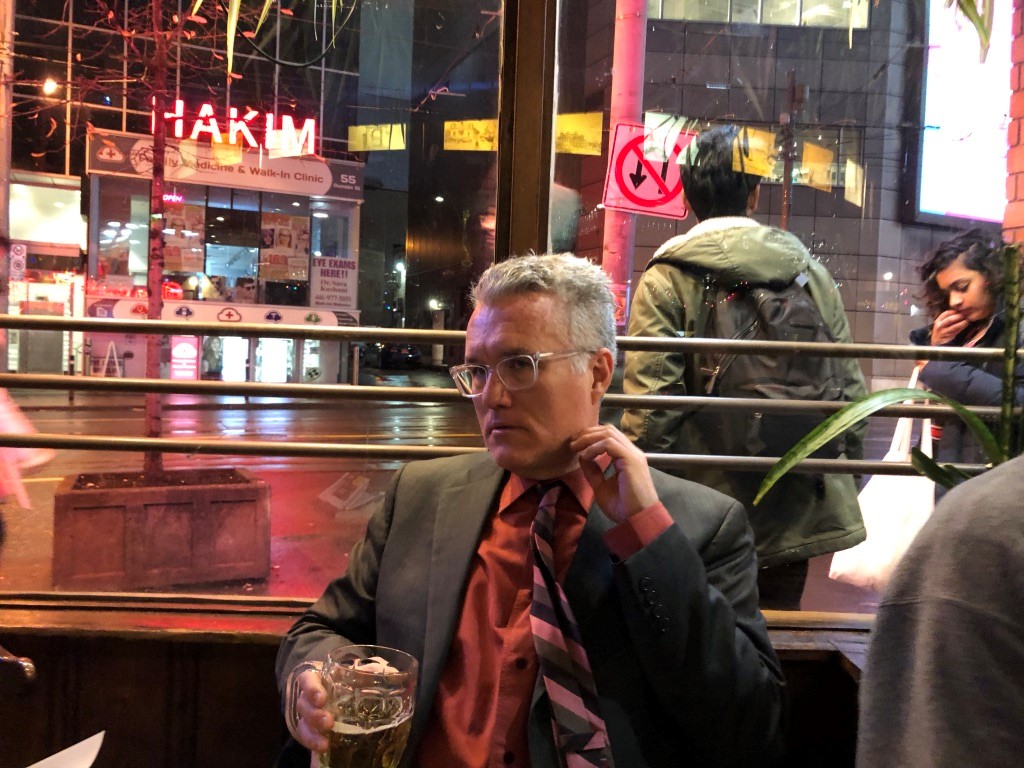 Display large image of Figure 1
Display large image of Figure 1
1 It is an honour to write a tribute to a colleague, collaborator, and friend R.M. Vaughan, who died in 2020. I knew R.M. as a personal friend who I visited in Toronto, Montreal, Fredericton, and Berlin. I called on him regularly as an educator, interviewer, and performer for a variety of events in Toronto, including at Ryerson University, Buddies in Bad Times Theatre, and the Gardiner Museum. For a while we shared a home in Toronto.
2 Richard Murray Vaughan was a true Renaissance person of Canadian culture. Vaughan, who was born in Saint John, lived and worked in Toronto, Berlin, and Montreal and had recently moved to Fredericton to become the writer-in-residence at the University of New Brunswick (UNB). He graduated from UNB with both his Bachelor of Arts and Master of Fine Arts degrees. He loved his communities in Toronto, Montreal, and Berlin, but New Brunswick was always close to his heart. To those of us who knew him well, New Brunswick captured our imagination through his stories about his home province and through his writing.
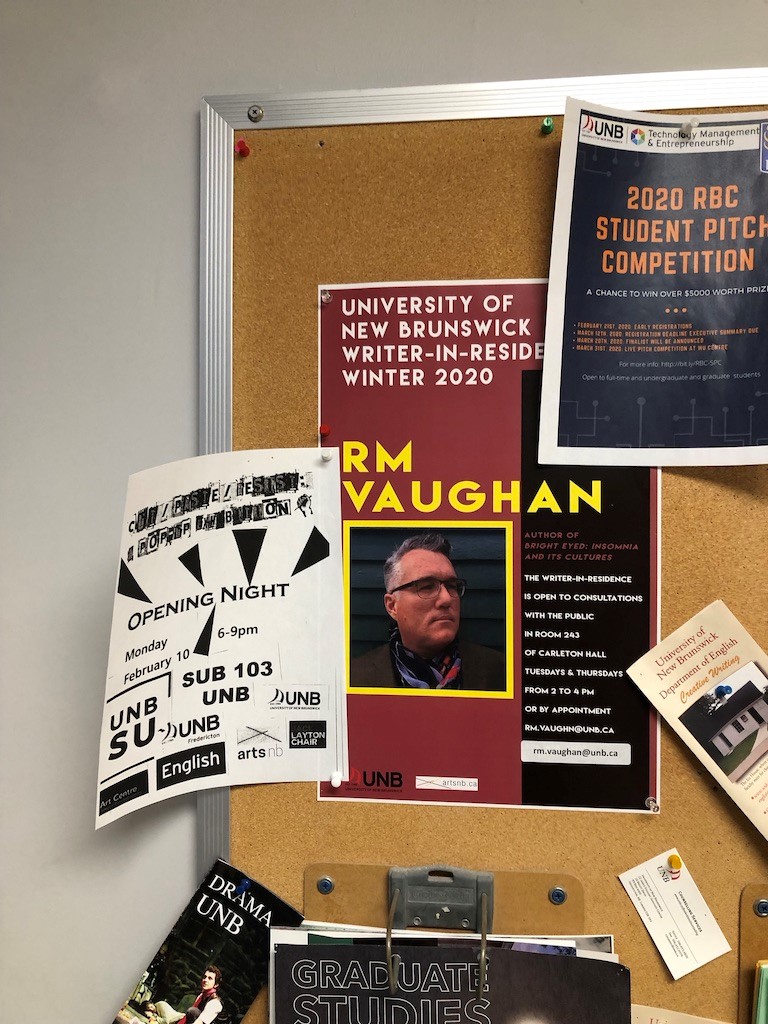 Display large image of Figure 2
Display large image of Figure 2
3 R.M. was a poet, fiction author, art critic, social commentator, playwright, visual artist, crafter, performance artist, and film maker. Voracious reader and art connoisseur, R.M. lived a life of art through commenting on and creating art. His wry sense of humour, biting critique, and sensitive insight were evident in his plays, poetry, and performance, as well as in his video and social/political commentary.
4 R.M. was a widely published author who worked with the mainstream press as well as the independent press. He was the art critic for the Globe and Mail where he also did superlative pop culture and celebrity interviews as well as opinion pieces, and he wrote regularly for the CBC. Just as important to R.M. (or perhaps more so) was his work with the Canadian independent press. He had a long and productive relationship with Coach House in Toronto and he wrote for New Brunswick’s Frog Hollow Press. He published books with Insomniac Press, Tightrope Books, and ECW Press. His contributions to poetry journals and poetry anthologies are numerous, including Fredericton-based Fiddlehead. And he made several contributions to anthologies, notably anthologies that focused on queer or gay poetry and fiction, as well as anthologies that focused on New Brunswick culture. He was generous in writing essays for many artists including catalogues or publications of their art. When he took an interest in an artist’s work, he was skilled at commenting on technique, intent, process, and cultural context. He knew art.
5 It is impossible to document in a tribute the wide range and reach of his writings and artwork. His publications include his poetry books Troubled, Ruined Stars, Invisible to Predators, and A Selection of Dazzling Scarves. His novels include Spells and Quilted Heart. His published plays include One Year After, The Monster Trilogy, and Camera Woman. He created over twenty videos on his own and with collaborators, including most recently “House Dress” with Jared Mitchell and Keith Cole. “House Dress” was part of the Homografia/Homography Festival in Mexico City and is in the Permanent Collection of the Whitney Museum of American Art.
6 He lived among artists and he cultivated friendships that were deeply felt, often resulting in creative collaborations. R.M. was the centre of a large network of Canadian culture creators. If he enjoyed a person and/or their work, he made sure they knew others who were important to him. These actions were more than professional networking. He took great pleasure in introducing people in the hopes that they formed a creative spark. Through R.M. I met poets, gallerists, visual artists, writers, culture critics, film makers, performers, actors, curators, and publishers. Through introductions by R.M. I met people from Toronto, Montreal, Saint John, Fredericton, and Berlin. He loved his community in Toronto, he loved European trips (London was a regular) and he loved New Brunswick.
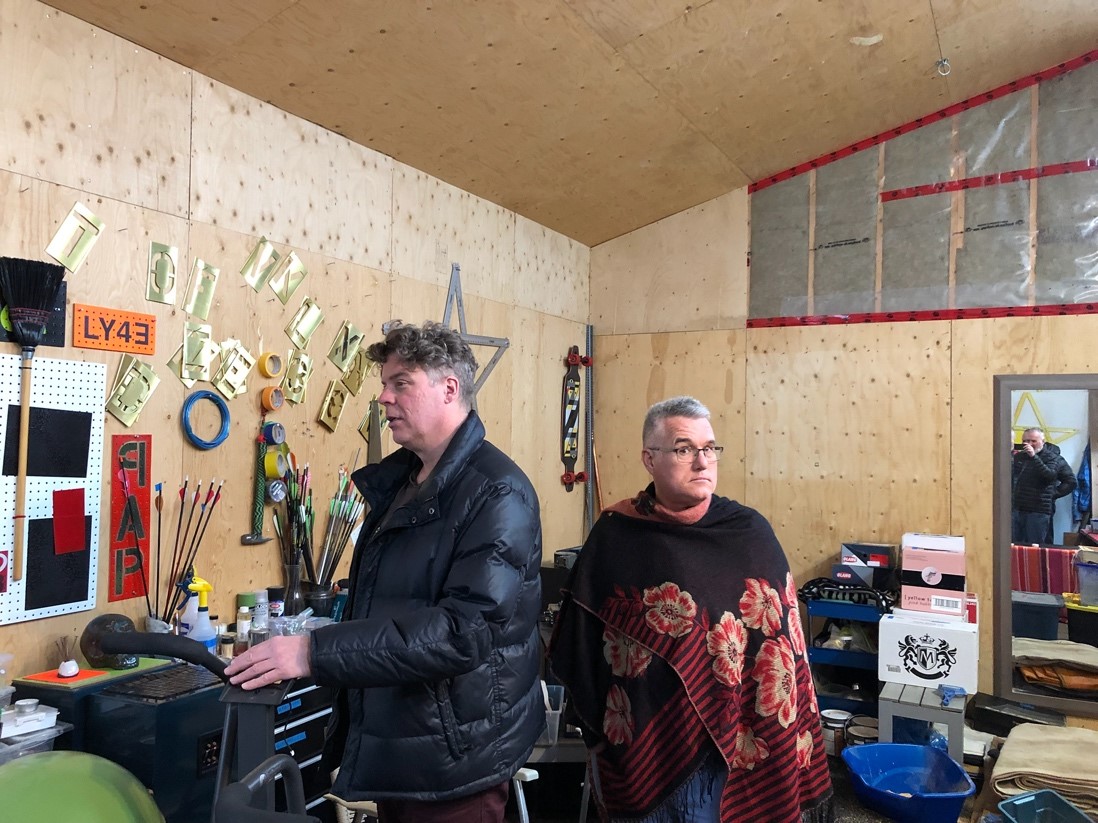 Display large image of Figure 3
Display large image of Figure 3
7 R.M. was known for his parties, especially Halloween, where guests were expected to craft pumpkins. No excuse if you felt that you did not have the skill or the nerve to create art or craft, he would help each one of us to push through. Such was R.M.’s agile mind and his ability to speak at length that he could keep each of us engaged no matter our field of work or where we were from. In this way his get-togethers in Toronto, Montreal, and Fredericton felt more like salons than parties.
8 Craft was close to R.M.’s heart. He loved the unfinished, the eccentric, and the slightly blemished. He invited people to collaborate with him to craft, write, curate, or create books. One such activity (of many) was the Cut Paste Resist Show at the UNB Art Centre (https://www.instagram.com/cut_paste_resist/) in collaboration with myself as Jack Layton Chair at Ryerson University. He was giddy over the great number of submissions from all over the world. Conceptualized by R.M., the show was to break through sterile online imagery to encourage people to express their resistance through creating collage. He was tremendously proud of the great mix of amateur and professional artists, youth through seniors, persons of gender and sexual diversity, students and faculty from New Brunswick and across Canada, and he submitted a number of ‘anonymous’ submissions.
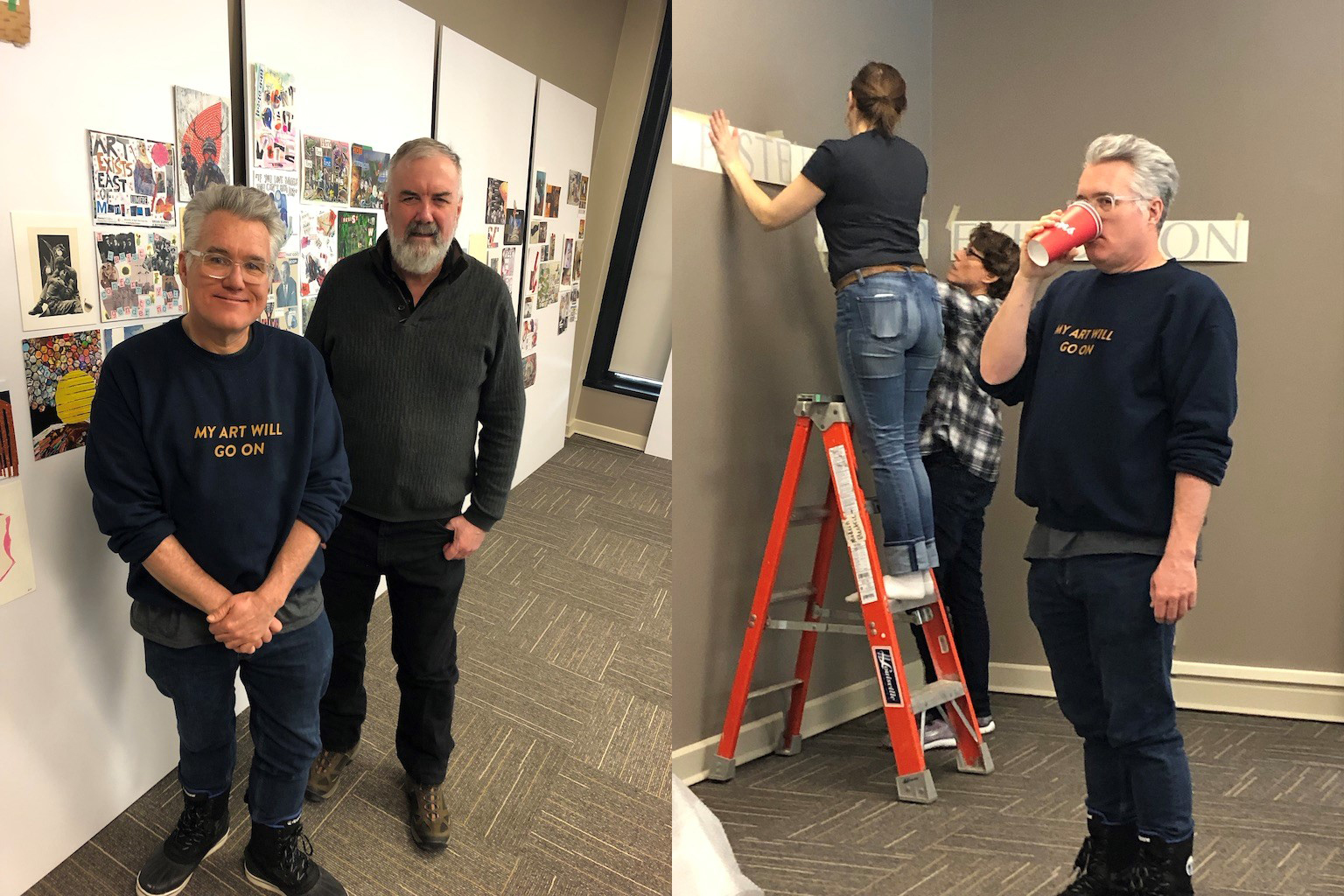 Display large image of Figure 4
Display large image of Figure 4
9 At the same time, he took umbrage with what he perceived to be a lack of effort and intellectual laziness. He disliked the sterile, the bureaucratic, the obtuse. Any form that sought to summarize life or art through a sterile cleanness offended him. He disrupted such sterility often by working from his own story in a manner that made the personal political. For instance, he wrote about his struggle with insomnia, he wrote about the abusive relationship with his psychiatrist, and about our struggle with fear and trauma during COVID-19.
10 He also interjected his body into his visual art. For example, he was the subject of his own photo essay “Am I Becoming My Father?” and the “Live With Out Culture” campaign that he co-created with Jared Mitchell. For “Am I Becoming My Father?” he posed at his mother’s New Brunswick home in his father’s clothes. The stiff uncomfortable poses suggest his anxiety in a culture of masculinity. “Am I Becoming My Father?” was part of a group show Double Chin Picnic at Katherin Mulherin Art Projects in Toronto in June 2004. It was subsequently shown at the Exposure Festival in Edmonton, as an artist project in the magazine Locus Supectus and in C Magazine as part of an article I wrote on shame and masculinities. In “Live With Out Culture” Jared Mitchell and R.M. Vaughan reimagined a City of Toronto campaign to market Toronto as ‘cultured’ so that it was not simply “overly peppy underwear models dancing with books and paintbrushes” (https://rmvaughan.ca/live-with-out-culture/). “Live With Out Culture” was first shown at Paul Petro Multiples and then at the Museum of Contemporary Canadian Art in Toronto.
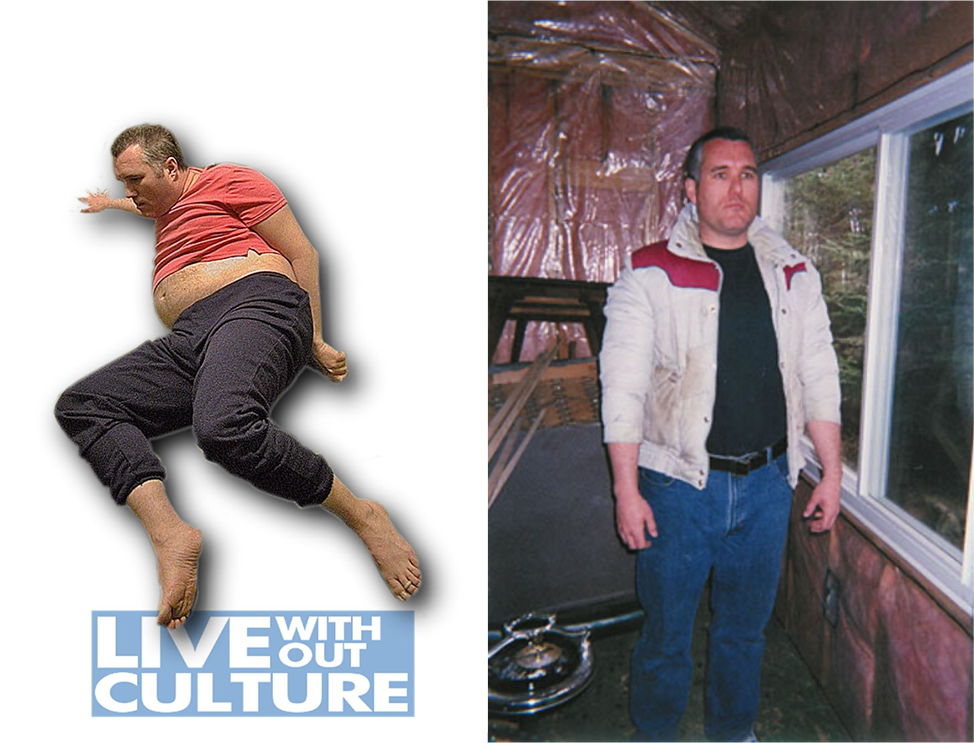 Display large image of Figure 5
Display large image of Figure 5
11 Art drove his life decisions. It was only after knowing R.M. for many years that I fully realized that he was a genuine aesthete. He took personal, social, and economic risks to pursue his craft. He lived lightly as an anti-materialist who collected few possessions. He read voraciously but seldom kept books. I once found one of my books that I had given to him, complete with my notation to him, in a secondhand bookstore on Ossington Street in Toronto. Yet the next time I saw him he had read it, he had comments on it, but he did not need to keep it.
12 I believe that the recent publication VE1XE with Dawn Boyd (a visual artist and graphic novelist, also from New Brunswick) is a masterpiece. Here is his poetic voice where the personal is political. We encounter his estranged (his father) yet loving (his mother) relationship with his past. I cherish his autobiographical voice, his poetic script, and his clear, defiant, yet sad resolution. We also see the close collaboration with a lifelong friend. Through prose poetry he speaks with precision about the possibilities and limitations of his childhood in New Brunswick. That book in particular ends with him leaving, walking away, and saying:
how I sing now
13 R.M. created a cauldron of Canadian culture, through his words and images, his personal networks, his deep and critical thought, his work on the tensions of reconciling his New Brunswick heritage with his strong and vital presence in central Canada, and his constant and steady support for those of us who had the pleasure to be close to him.
 Display large image of Figure 6
Display large image of Figure 6